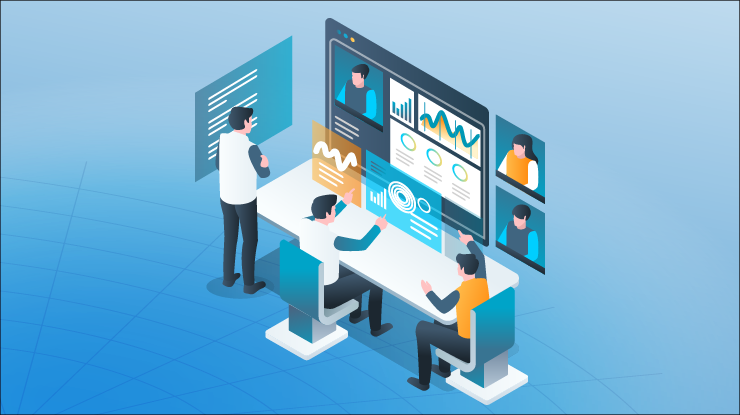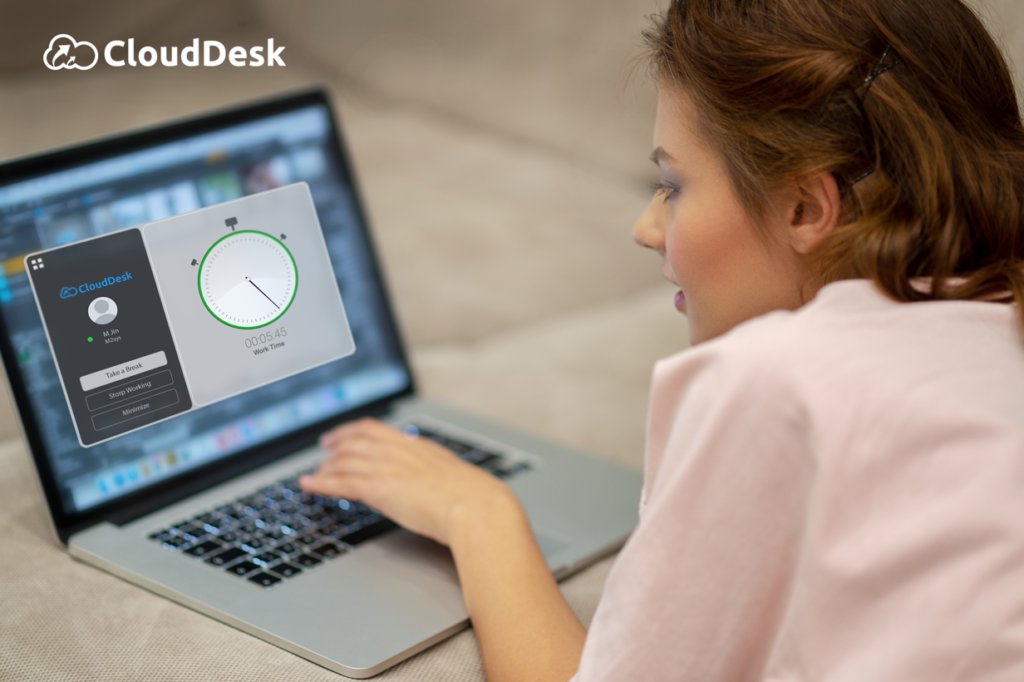The term employee monitoring software is used to refer to the software that companies utilize to keep track of their employees' actions when they work. It permits employers to collect data on various aspects of employees' behavior like internet use applications, keystrokes, app usage as well as screen shots. The software for monitoring employees has a primary purpose to increase productivity of employees, as well as ensure that the company's policies are followed and protect confidential information and address any security concerns. When selecting an employee monitoring software, there are numerous factors to think about. These are the key factors to consider features: Decide on the features your organization needs according to your needs. Common features include blocking of websites and keystroke logs, as well as application use tracking, and monitoring of emails. Prioritize features that align with your monitoring goals.
Privacy and Compliance- Make sure that the software follows the ethical and legal guidelines for controlling employees. Be aware of the laws and regulations in your state. This covers privacy and data protection laws. Find software that has transparent and configurable privacy settings that respect the rights of employees.
User-Friendliness. Consider the user-friendliness and accessibility of the software. Time will be saved and the implementation simplified when you can use a simple interface and set-up process. Look for dashboards that are customisable and reporting tools that allow you to effortlessly interpret the data collected.
Integration and compatibility – Check whether the program is compatible with your existing infrastructure and other systems you are using. This includes operating systems and email clients. The software that you are compatible with provides seamless monitoring and does not disrupt day-today business.
Data Security- Examine the security measures implemented by software in order to ensure the security of data collected. Access controls and encryption and safe storage of data and conformity to industry-standard security protocols are essential. Make sure that the software provider uses secure practices that are robust and have a good track record in security of data.
Scalability- Think about the scalability of the software to support your organization's growth. Choose software that is easily scalable to accommodate your evolving needs if you plan on expanding your workforce or opening new offices.
Analytics and Reporting - Examine the ability to report of the software. Look for features which provide comprehensive insights on employee productivity and the allocation of time. Customized reports and analytics will assist you in making educated decisions, and identify areas for improvement.
Customer Support: Examine how well the vendor provides customer service. Evaluate their responsiveness, availability and technical support. A competent customer support team will provide prompt assistance to any issue that might arise.
Cost- Consider the pricing model for the software, whether it is a one-time payment, subscription-based, or usage-based. Understanding the pricing structure and the additional costs, such as support, updates or additional features is essential. Be sure to weigh the price of your product against its features and value.
Transparency and Communication with Employees Keep clear communication and transparency when working with employees in relation to the monitoring software. Explain the scope and purpose of monitoring in a transparent manner. Address any concerns and make sure they know that their privacy will be respected.
These elements will help you make an informed decision about the employee monitoring software to choose. Read the recommended employee monitoring software for blog recommendations.

What Are The Distinct Features Of Employee Monitoring Software?
The software for monitoring employees comes with various features to monitor and analyze employee actions. The features that are available may differ between different software applications, but here are some common features found in the software for monitoring employees: Activity MonitoringThis feature records and logs employee activities that include sites visited, apps used along with the file types accessed, as well as time spent working on each task. It provides a complete description of the activities employees engage in during their work hours.
Keystroke Recording Keystroke recorders can capture every keystroke made by a worker. It can be used to assist in finding productivity bottlenecks, deterring unauthorized activities and gathering evidence in the event of an investigation.
Screenshots and Screen RecordingSome software takes screen shots of employees' computers on a regular basis or records their screens in real-time. This feature can help monitor productivity, ensure that compliance is maintained, and help to resolve issues.
Internet Usage Tracking This feature tracks employees' internet activities, like visited websites, search queries downloads, etc. It helps identify inappropriate browsing or security risks.
Application Usage Tracking- This feature tracks applications used during working hours by employees. It offers insight into the most commonly used applications and identifies any unapproved or excessive usage.
Email Monitoring- Email monitoring lets employers monitor employee email messages, including those messages that were received and sent attachments, emails, and other emails' content. It's a great method to enforce policies of the company, protect data, and look into suspicious actions.
Tracking of Documents and Files This feature monitors file access as well as modifications and transfers. It protects sensitive data as well as monitor document collaboration.
Remote Monitoring: Employers have the ability monitor their employees remotely, or who are at different locations. Employers can track their activities and monitor the efficiency of employees regardless of their physical location.
Productivity Analysis Monitoring software for employees includes the ability to analyze productivity. These features provide insights into the patterns of employees of work, time allotment and productivity levels. These analyses pinpoint areas that need improvement and can help to optimize workflow.
Reporting Analytics, Visualizations and Reporting The comprehensive analytics and reporting features produce detailed reports and visualized data using the information collected. These reports provide valuable insight into employee performance, time management and allocation of resources.
Compliance and Policy Management- Some software solutions provide features that ensure compliance with regulations of the industry and company guidelines. Employers can define and enforce policies related to acceptable computer use, internet access, and data security.
Alerts and Notifications Alerts notify managers as well as employers about certain situations. They are able to alert you about suspect behavior, for example, excessive internet usage or attempts to access restricted sites.
It is important to be aware that different employee monitoring solutions can have a variety of capabilities and features. Consider features that will help you achieve your goals for monitoring and that also meet the ethical and legal standards of your area of operation. Read the recommended employee monitoring services for website advice.

What Is The Law Of Compliance And Privacy For Employee Monitoring Software?
Respecting privacy and compliance laws is a critical element of software for monitoring employees. Here are a few methods that employee monitoring software adheres to privacy and compliance regulations, despite the fact that the legal requirements vary from jurisdiction to jurisdiction. Consent and notice- Many jurisdictions demand informed consent by employees and demand that they be informed about monitoring activities in advance. Employee monitoring software typically includes tools that permit employers to clearly communicate their policies regarding monitoring to employees clearly. This could involve giving written notices, seeking the consent of consent forms, or preparing an employee handbook that outlines monitoring procedures.
Transparent Monitoring Policies- Employee monitoring tools help promote transparency. They help employees understand what types of information is being gathered and why, as well in the scope of monitoring. Employees will be able to know their rights to privacy and the limits of monitoring when the policies are precise and complete.
Data minimization is often used by software for employee monitoring to ensure compliance with privacy laws. The software stores and collects only what is necessary, and eliminating unnecessary or overly detailed data. By restricting data collection to that which is necessary to monitor This software decreases privacy risks and encourages compliance.
Anonymization and Aggregation- Some software that monitors employees can anonymize or aggregate information to ensure privacy further. Data collected is anonymized to eliminate personally identifiable information. Data from multiple employees is compiled to give an insight on the collective level without identifying individual.
Secure Data Storage and Encryption- Employee monitoring software prioritizes the security of data collected. It usually employs secure data storage practices and encryption methods to protect information from unauthorized access, breach, or accidental disclosure. Data security is essential when it is in transit and at rest.
Access Controls with Restricted Rights In order to ensure compliance, the majority of employee monitoring programs offer access control as well as restricted rights. Employers have the option to restrict access to monitoring information to those with legitimate requirements for example HR personnel or designated administrators.
Rights and Remedies for Employees Rights and Remedies - Respecting employee rights is an essential aspect of complying with privacy and compliance regulations. Software for monitoring employees usually has tools that allow employees to view and rectify their own monitoring records, as well as file complaints. It allows employees to assert their rights and seek recourse in the event of privacy violations.
Conformity to Data Protection Regulations – Employee monitoring software is designed in accordance with applicable data privacy regulations, including the General Data Protection Regulations (GDPR), in the European Union, or the California Consumer Privacy Acts (CCPA), in the United States. Compliance requires implementing the necessary measures to safeguard the rights of data subjects and guarantee lawful processing.
Note that, while employee monitoring can help organizations meet the requirements of laws and regulations, they must also consult with lawyers and remain up to date on local laws and regulations. Compliance and privacy laws requires a comprehensive approach that goes far beyond the software itself, which includes clearly defined policies, training for employees, and ongoing compliance monitoring. Have a look at the top rated time tracking monitoring services for site info.